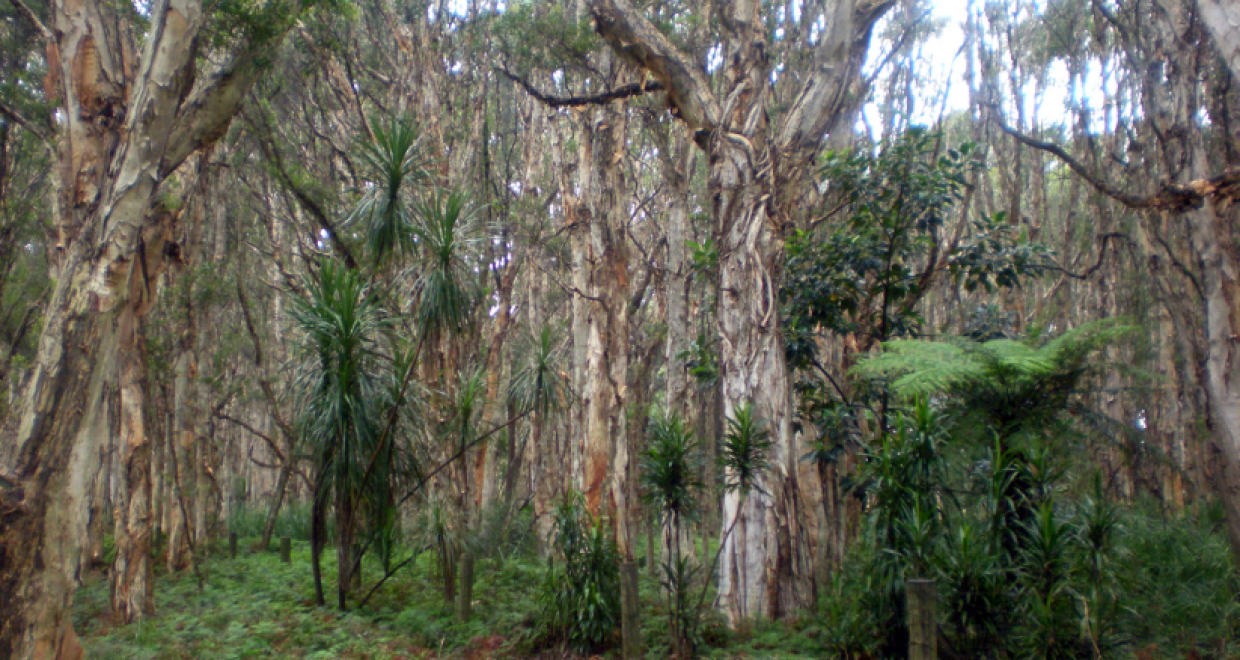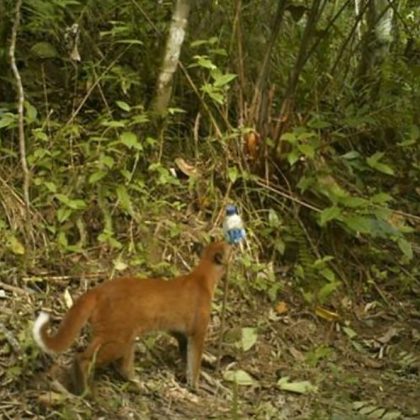Unimagining conservation
The EC Perspectives paper from the March issue of Environmental Conservation is entitled Ecological history of Lachlan Nature Reserve, Centennial Park, Sydney, Australia: a palaeoecological approach to conservation by Rebecca Hamilton and Dan Penny. In this blog Professor Rebecca Hamilton discusses the research.
“A visitor to Centennial Park, only 5km from downtown Sydney, may find themselves wandering along a boardwalk beneath the canopy of a splendid paperbark forest. This is Lachlan Swamp Reserve, a wetland preserved within the well-groomed Park. Interpretive signs along the boardwalk describe the Reserve as the last remnant of a once much larger swampland ecosystem. European colonisation led to the progressing degradation of these swamps, which were used as Sydney’s first permanent water supply, and have now otherwise disappeared beneath sprawling suburbia. The contemporary Reserve flora is thought represent that of these lost landscapes. This, alongside the rich history of the site, has resulted in conservation management striving to preserve the Reserve in its ‘natural’, pre- to early- European condition. To the passing palaeoecologist, however, assertions of ‘naturalness’ invite careful investigation.
Traditional conservation is commonly based on ideas of protecting “pristine” wilderness. This premise is still the basis for much decision-making in conservation practice, particularly in “new world” countries such as Australia. Here – because the environment has only undergone relatively recent transformation by Western development – we are still able to visualise pre-European landscapes. However, the role of humans in shaping even the most “pristine” area begs the question of whether traditional conservation goals are scientifically realistic, or rather founded upon social constructs of naturalness.
Lachlan Reserve is an ideal test case. Given the lack of historical information on the site, we created a record of vegetation change based on plant remains preserved in the moist swamp soils. This enabled us to compare the flora of the pre-/early-European site with the contemporary vegetation. Our results show that the modern site forest was planted in the late 19th century, and bears little resemblance to the heathland that grew here before and immediately after the European settlement. As such, the site’s perceived conservation value, and the management policy that conserves it, is founded upon a social construct of naturalness rather than the actual site history.
The results of this study highlight two challenges that 21st century conservation managers have to deal with. First, it raises the question of whether perceptions of “naturalness” counteract beneficial and effective conservation outcomes. In this case, contemporary conditions, such as nutrient loading from the parklands and its broader suburban context, means that restoration of the 19th century heath landscape may be cost prohibitive if not undesirable. Thus, conservation investment and marketing may be best directed at emphasising the cultural significance of the site alongside the other valuable ecosystem services that it provides to stakeholders.
Second, recognition of the value of the goods and services that even highly modified ecosystems provide, as well as growing understanding of concepts of resilience and threshold dynamics in ecology pose challenges for conservation practitioners. Now, managers have to justify which ecosystem state to preserve/restore/create while considering the sustainability of this chosen environment in light of future pressures. As is demonstrated in this paper, a palaeo-perspective is powerful for demonstrating past ecosystem resilience to various disturbances. This long-term knowledge, alongside an understanding of socio-ecological system feedbacks, is necessary to inform evidence-based decision-making, highlighting the rich working grounds for interdisciplinary collaborations amongst palaeoecologists, ecologists and practitioners.”






